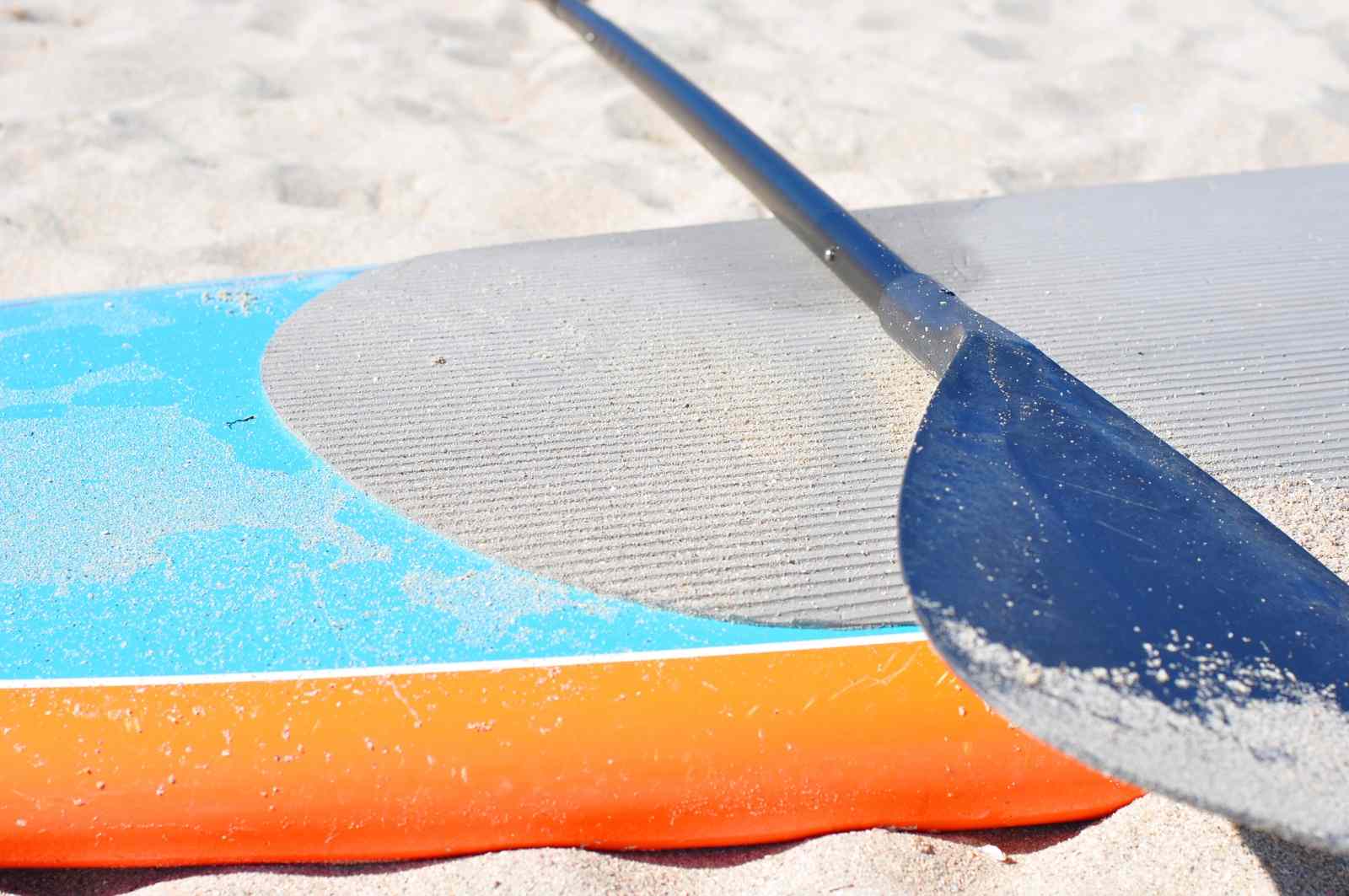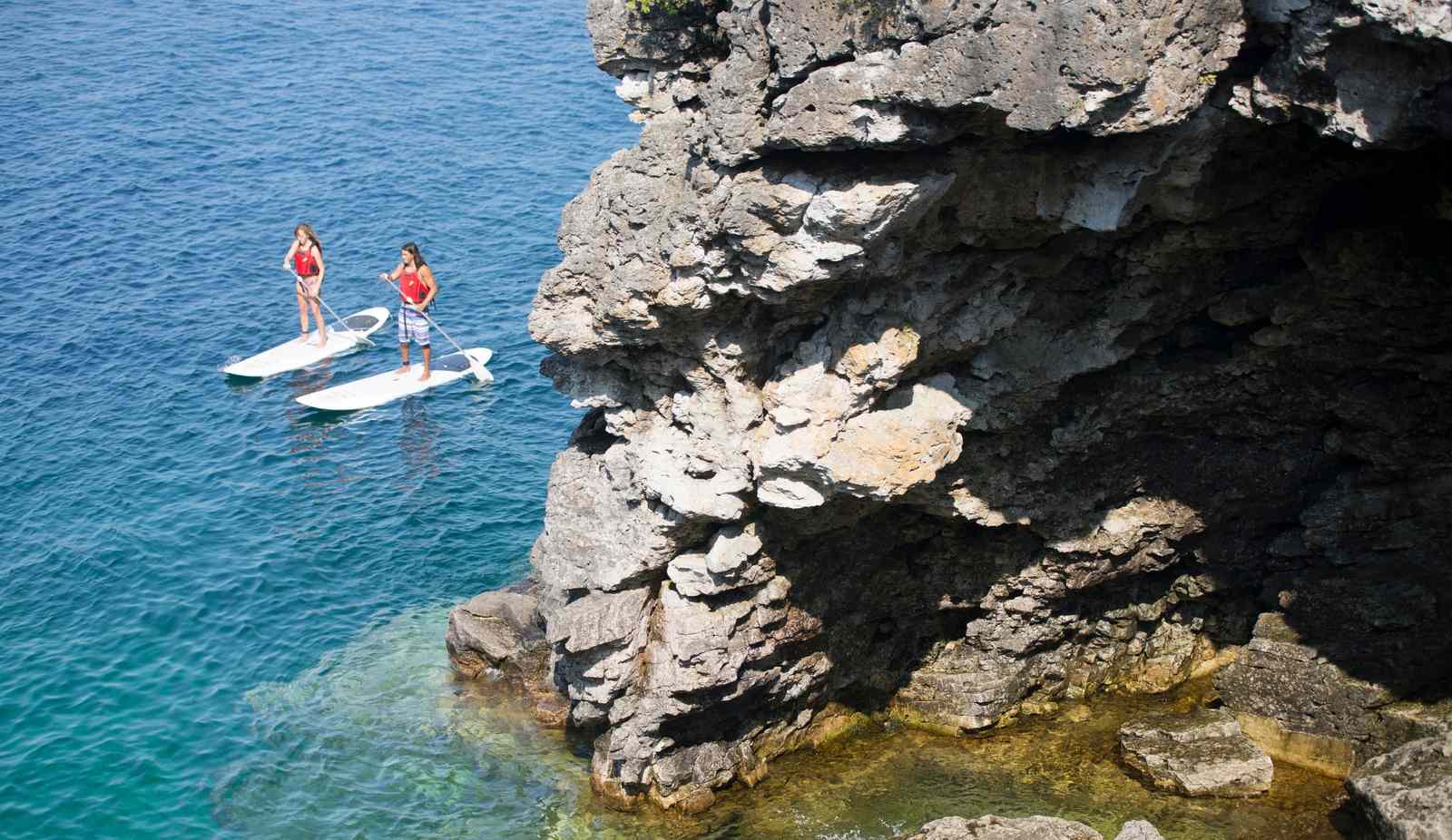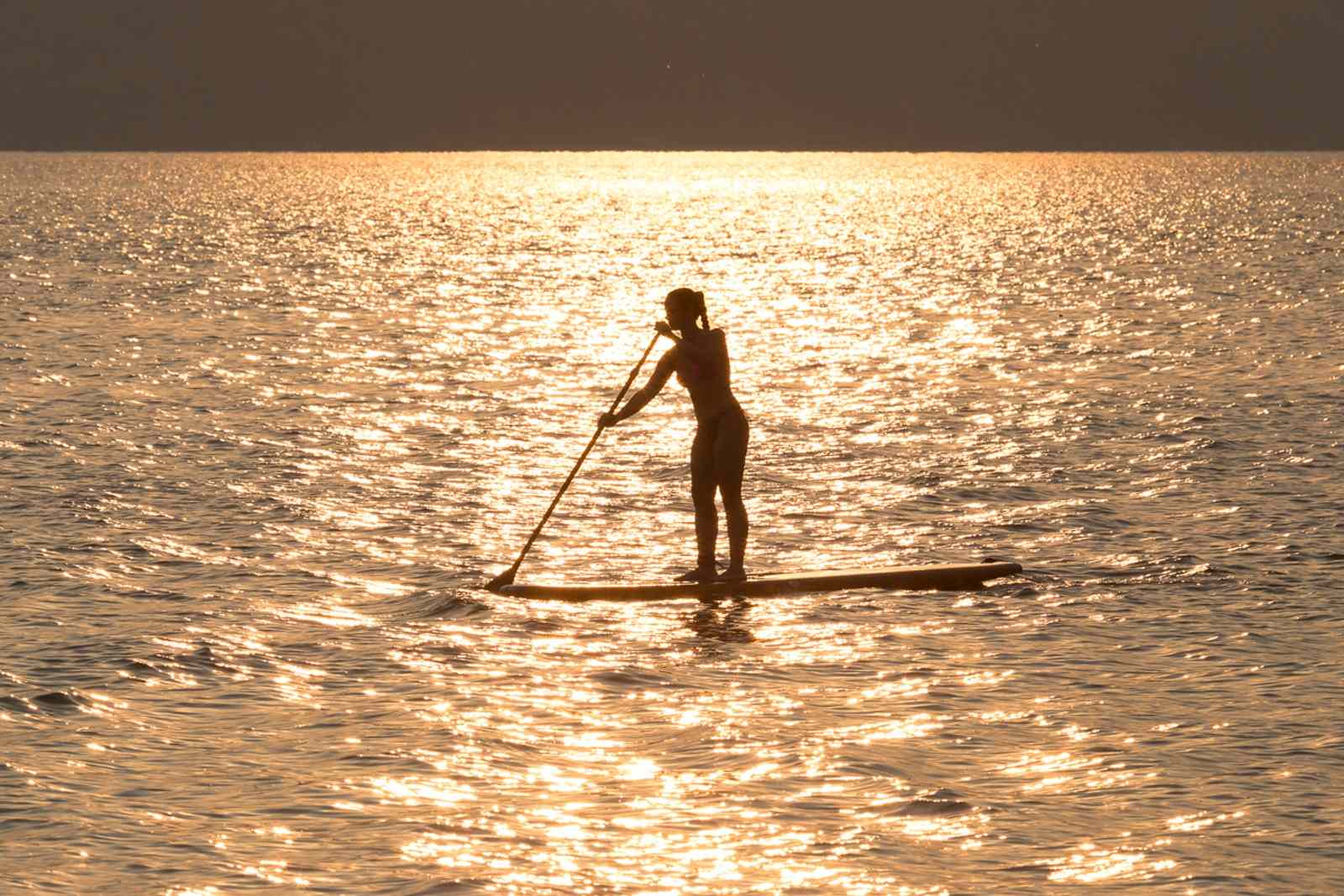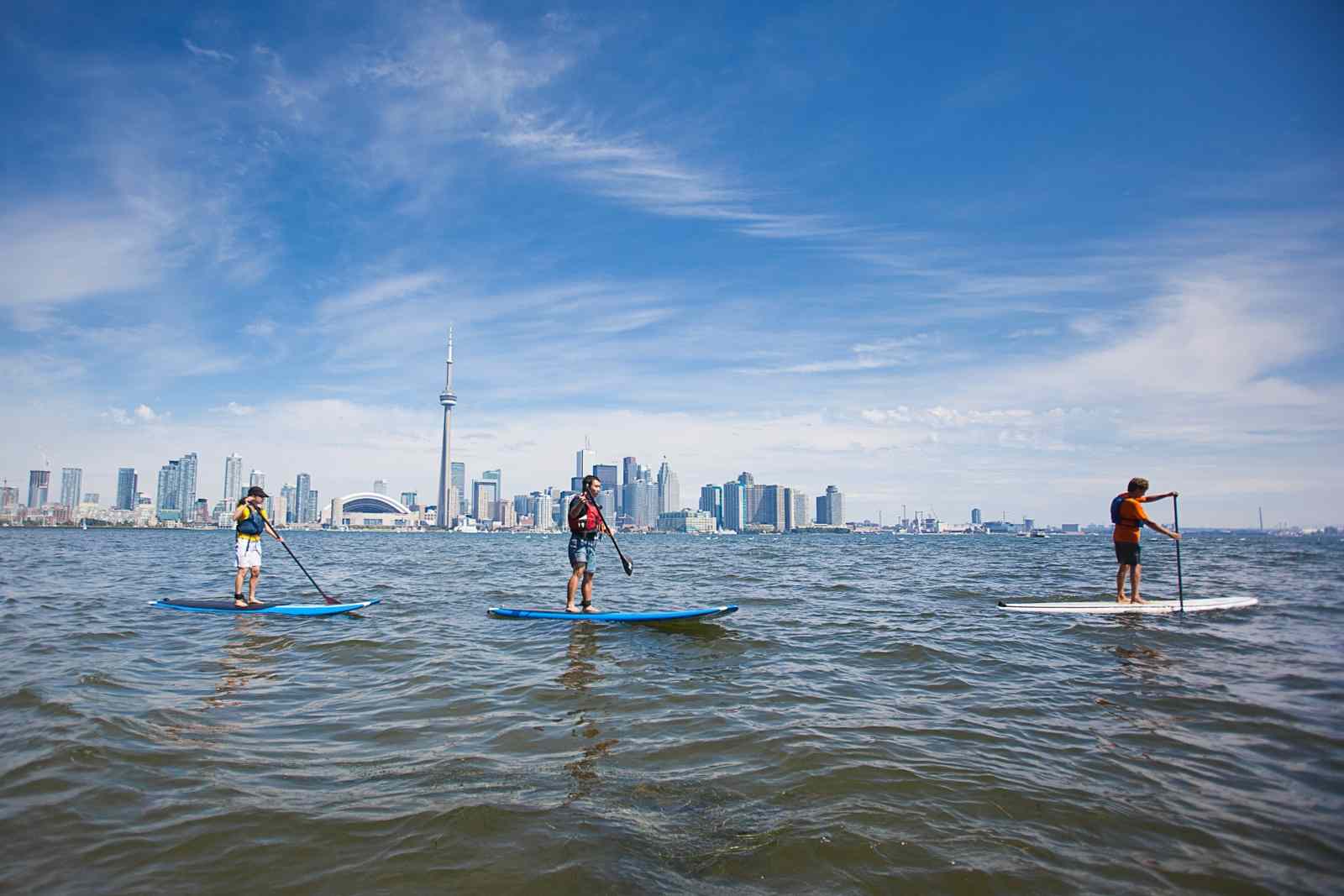Published July 9, 2019
Stand up paddleboarding (sometimes affectionately referred to as ‘SUP’) has taken the watersport world by storm. It’s not quite as challenging to learn as surfing, but it definitely takes more focus and body-awareness than canoeing.
Why try stand up paddleboarding?
Stand up paddleboarding provides an excellent workout. Not only is it low impact, but it engages your entire body in a test of endurance, strength, balance, and concentration.
It’s particularly great for your leg, abdominal, arm, and back muscles. But don’t be put off by the word “workout”! Paddleboarding is one of the most relaxing and accessible ways to get out on the water.

The biggest benefit of stand up paddleboarding is definitely the unique perspective it gives you of the water.
There’s something magical about gliding along the surface of the lake with so little to obstruct your view of your surroundings, so little between you and the natural world. Stand up paddleboarding is truly a fantastic way to feel like you’re one with the water.

Convinced that you should embark on your first stand up paddleboarding adventure? Here are a few of our tips to get you started.
What you need to go stand up paddleboarding:
It’s right there in the name! All that you really need is a board and a paddle (and a lifejacket, if you choose).
If you’re just beginning, you may want to rent your equipment until you find out what works best for you. Most lakeside towns have paddleboard rental spots. If you’re in Toronto, check out Toronto Island SUP on Ward Island for both rentals and lessons.

‘All-around’ paddleboards are good for beginners, and are known for being especially safe, stable, durable, and well-balanced. Look for a board with a length of at least 10 feet (3 metres) and a width of at least 30 inches (75 centimetres).
The longer and wider the board, the easier it will be to stay upright, and a board with a soft top will help to cushion your body if you do lose balance.

How to stay safe while stand up paddleboarding:
- Don’t go alone or unsupervised
- Use a board with a leash so that it can’t float away
- Wear a lifejacket
- Protect yourself from the sun’s reflection off the water with sunscreen and sunglasses
- Check the day’s weather, and don’t go out in windy or stormy conditions
- Don’t go after dark

How to stand up paddleboard:
Get on the board:
Get onto your stand up paddleboard by climbing onto it from a dock or a boat, or by getting onto the board from the water. Either way, it’s best to start slow. First get both knees onto your board and get your balance. From kneeling, slowly stand up from that position.
Adopt a secure stance:
Once you’re up, stand with your feet shoulder width apart, with your knees slightly bent, and with your back straight. Focussing on a specific object on the horizon will help you to feel more sturdy.

Paddling your board:
The easiest way to steer straight on a paddleboard is by alternating stokes on your left and right side. If you would like to turn in a certain direction, paddle on the opposite side of the board while turning your body slightly in the direction in which you would like to go. To reverse, paddle backwards as you would on a kayak or canoe.
Falling off your board:
If you feel yourself losing your balance, always fall away from the board to prevent injury. Once in the water, don’t panic! Stay calm and recover your paddle if you’re no longer holding it. Get onto your stomach in the middle of the board, like a seal hauling out onto land. Slide your legs on, assume a kneeling position, and then back stand up again. You've got this!

Where to go stand up paddleboarding:
As a beginner, it’s a good idea to stick to calm waters, like lakes, ponds, and rivers. Check out our featured destinations for stand up paddling and view the specific locations on a map here.
Once you get comfortable with the basics, stand up paddleboarding offers endless options for fun. From surfing powerful waves, to onboard yoga, to racing, to fishing, to whitewater adventures… the limits of you and your board are up to you!
